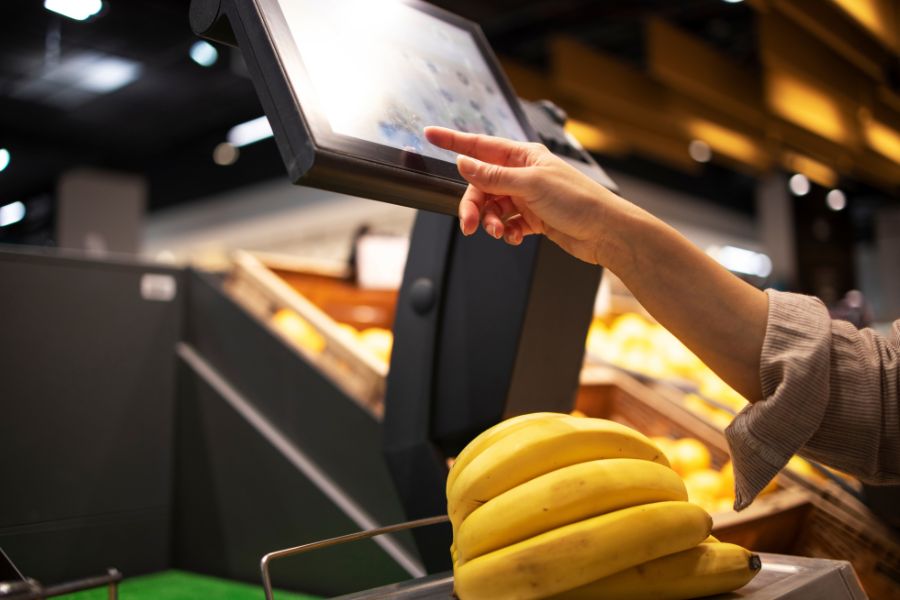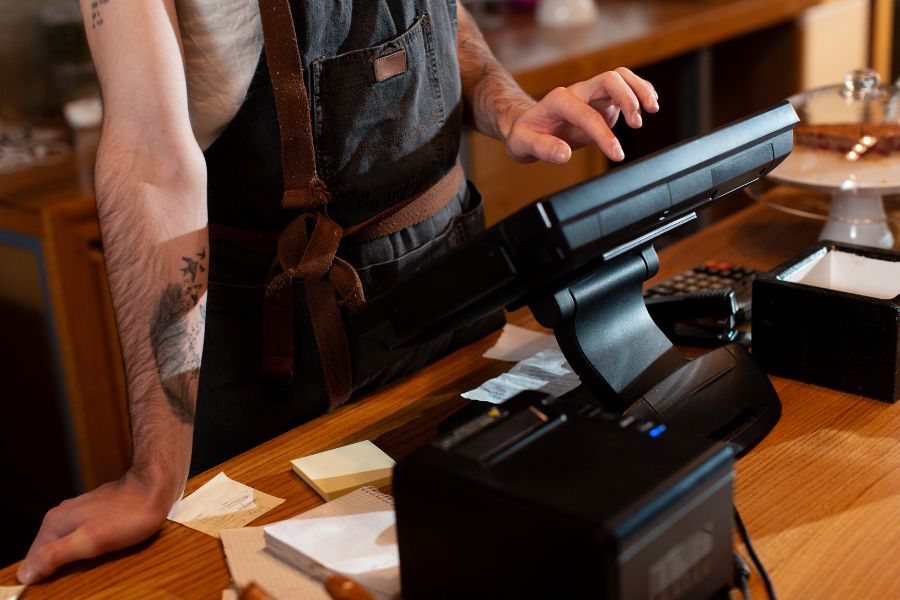Fashion retailers need reliable point of sale systems to run their businesses. Small differences between fashion point of sale systems can make a big impact on daily operations, staff productivity, and the bottom line. Managing inventory, processing sales, and tracking customer data are core tasks that shape a store’s success.
This guide compares 3 leading POS solutions to help you pick the right one for your fashion store. We’ll examine their core functions and capabilities in the fashion industry. Through real user feedback and performance data, you’ll learn how each system performs in actual retail settings.
Keep reading!
Highlights:
- ConnectPOS streamlines inventory management and enhances customer engagement with smart recommendations, making it ideal for fashion retailers operating across multiple sales channels.
- Lightspeed Retail simplifies inventory control with intelligent purchase ordering while supporting international growth through multilingual SEO and centralized management.
- Magestore POS delivers seamless real-time synchronization between online and offline stores, ensuring fashion brands using Magento can maintain unified inventory and sales operations.
What is a Fashion Point of Sale System?
A fashion Point of Sale (POS) system is specialized software built for clothing and accessories retailers. Unlike basic cash registers, these systems handle complex tasks specific to fashion retail. They track size and color combinations, manage barcodes, and monitor stock levels across store locations.
The core functions include processing payments, managing inventory, and recording customer data. Fashion retailers use these systems to scan items, process credit cards, and generate detailed sales reports. Many POS systems connect with online stores, letting businesses sync their inventory between physical and digital sales channels.
Customer management is another key aspect of fashion POS systems. Store staff can access shoppers’ purchase histories, reward points, and style preferences right at checkout. This helps create personalized experiences and builds customer loyalty through targeted promotions and recommendations.
Key Elements of a Clothing Store POS System
A clothing store POS system needs core transaction tools plus business management capabilities.
- Stock Control: The system tracks real-time inventory, including sizes, colors, and styles. It alerts staff about low stock levels.
- Fast Checkout: Barcode scanning and product lookup speed up sales. Digital payments add convenience.
- Customer Management: The system stores purchase records and manages loyalty programs, letting stores send targeted promotions.
- Sales Channels: In-store and online sales sync together, keeping inventory counts accurate across platforms.
- Staff Tools: Managers can set employee roles, measure sales results, and monitor work hours.
- Return Processing: Simple steps guide staff through returns and exchanges while tracking refunds.
- Business Insights: Sales reports show trends, top items, and shopping patterns.
- Mobile Features: Portable devices allow checkout anywhere in the store or at events.
These basic functions help stores run smoothly and serve customers better.
Comparison of Top 3 Fashion Point of Sale Systems in the Market
This comparison of the top three fashion POS systems in the market will help you identify which solution best fits your business needs.
ConnectPOS
ConnectPOS is a cloud fashion POS system with real-time dashboards, predictive analytics, and custom reports that help manage inventory and marketing plans better. The system stands out as a premier fashion point-of-sale system, delivering comprehensive solutions tailored for clothing retailers. This powerful platform streamlines operations across your entire retail network through seamless omnichannel management and real-time inventory control.
Key Features:
- Smart Inventory Control:
ConnectPOS delivers comprehensive inventory management through real-time stock monitoring and automated updates across all sales channels. The system instantly alerts staff when stock levels reach predetermined thresholds, ensuring optimal inventory levels are maintained. Store managers can efficiently handle stock transfers between multiple locations.
- Advanced Sales Management:
The platform excels in handling complex product variations by managing multiple variants including size, color, and material combinations with ease. Merchants can create custom product bundles with unique SKUs to enhance sales opportunities and meet specific customer demands..
- Data-Driven Business Intelligence:
ConnectPOS leverages advanced analytics to provide deep insights into customer purchase patterns and behavior tracking, enabling merchants to make informed business decisions. The system analyzes data to optimize inventory levels based on historical sales and trends, while providing comprehensive performance metrics across all sales channels.
- Customer Experience Enhancement:
The system elevates customer service through AI-driven product recommendations based on purchase history and browsing behavior. Its integrated loyalty program functionality rewards customer engagement while maintaining complete purchase histories.
The system integrates seamlessly with various retail technologies and platforms, including mobile POS devices for flexible checkout options, CRM platforms for unified customer data management, comprehensive loyalty programs for customer retention, and diverse eCommerce channels to ensure consistent omnichannel operations.
Lightspeed Retail
Lightspeed Retail is a specialized POS system that delivers comprehensive retail management tools that are accessible from anywhere. The software transforms fashion retail operations through cloud-based technology and smart automation.
Key Features:
- Smart Inventory Intelligence:
Lightspeed Retail’s inventory management system offers sophisticated automation with intelligent purchase order generation. The platform excels in handling complex inventory tracking across multiple dimensions, while maintaining detailed vendor performance metrics to optimize supplier relationships.
- Data-Driven Business Insights:
The platform provides comprehensive analytics that reveal detailed sales patterns across seasons and time periods. Advanced staff scheduling tools optimize workforce management based on historical traffic patterns and peak sales periods. The system tracks product performance metrics and category-wise profit margins.
- Global Market Reach:
Lightspeed Retail empowers businesses to expand internationally with robust multilingual SEO capabilities and seamless cross-language product management. The unified dashboard provides centralized control over international operations, allowing retailers to manage multiple markets from a single interface.
- Strategic Decision Support:
The platform’s intelligent decision support system combines automated inventory replenishment with data-driven promotion planning to maximize sales opportunities. It provides strategic markdown recommendations based on product performance and market conditions.
Magestore POS
Magestore POS delivers native Magento integration, creating unified retail operations between physical stores and online platforms. Magestore POS bridges the gap between online and offline retail, offering Magento retailers a comprehensive solution for unified commerce management and enhanced customer service.
Key Features:
- Real-Time Synchronization:
Magestore POS delivers seamless real-time synchronization across all sales channels, ensuring instant inventory updates and automatic stock level adjustments as transactions occur. The system efficiently manages orders across multiple channels while maintaining perfect synchronization with both Magento and Shopify platforms.
- Advanced Inventory Control:
The platform offers sophisticated inventory management capabilities with comprehensive multi-attribute tracking that handles complex product variations including size, color, material, and seasonal attributes. Store managers benefit from complete cross-location stock visibility and unified inventory management across all locations.
- Customer-Centric Features:
Magestore POS enhances customer service through comprehensive omnichannel purchase history access and intelligent product recommendations based on customer preferences and buying patterns.
- Performance Analytics:
The platform provides comprehensive business intelligence through unified sales reporting across all channels. It enables retailers to track performance metrics and identify trends effectively.
In short, ConnectPOS, Lightspeed, and Magestore POS each excel in distinct areas of fashion retail management.
ConnectPOS stands out for its comprehensive omnichannel capabilities, offering robust inventory control and advanced customer engagement features across multiple sales channels. Its flexible payment options and clienteling tools make it ideal for retailers focused on delivering personalized shopping experiences.
Lightspeed distinguishes itself through powerful automation, featuring intelligent purchase ordering and multilingual SEO capabilities, making it particularly valuable for retailers with an international presence and complex inventory needs.
Magestore POS specializes in seamless Magento integration, providing real-time synchronization between online and offline channels – a perfect fit for Magento-based retailers seeking unified commerce operations.
| ConnectPOS | Lightspeed | Magestore POS | |
| Advantages | Strongest in omnichannel managementExtensive payment optionsAdvanced clienteling featuresComprehensive customer engagement tools | Superior automated inventory managementStrong multilingual capabilitiesDetailed seasonal analyticsBuilt-in SEO functionality | Native Magento integrationReal-time cross-channel synchronizationSeamless online-offline connectionPlatform-specific optimization |
| Best for | For comprehensive omnichannel retail operations | For automated inventory and multilingual requirements | For running a Magento-based business |
How to Select the Right POS System for Clothing Stores?
Let’s check out steps-by-steps for selecting a POS system for clothing stores:
Step 1: Assess Your Basic Requirements
To choose an effective POS system for your clothing store, start by listing your essential requirements and budget constraints. Your POS system should handle basic operations while meeting your specific business needs.
Step 2: Focus on Inventory Management
Look for robust inventory management features that track multiple product variations and stock levels across locations. The system must process real-time updates and automate reordering when necessary.
Step 3: Consider Sales Channel Integration
Ensure the POS integrates seamlessly with both physical and online stores, maintaining synchronized inventory and sales data. Customer management capabilities should include purchase history tracking, loyalty programs, and promotional tools.
Step 4: Evaluate Customer Management Features
The POS should excel in customer relationship features – tracking purchase histories, managing loyalty programs, and executing promotional campaigns. Advanced systems allow personalized marketing, customer data analysis, and detailed profile management for targeted service.
Step 5: Review Payment Processing
The system must support various payment methods including credit cards, mobile payments, and gift cards. Security features like fraud protection, PCI compliance, and user permissions protect your business and customer data.
Step 6: Assess Security Features
Strong security protocols safeguard both business and customer data. Select a POS system with advanced fraud detection that flags suspicious transactions instantly. The platform should integrate seamlessly with your store’s security cameras for transaction monitoring. Ensure the system maintains current PCI compliance standards to protect payment data.
Step 7: Consider Scalability
Consider scalability for future growth – opt for cloud-based systems that accommodate multiple stores and regular software updates. Test the POS interface thoroughly to ensure it meets your daily operational needs and staff can use it efficiently.
In Conclusion
Choosing the right fashion Point of Sale system for your fashion retail business can make a big difference in how smoothly your store runs. Each of the three systems we’ve reviewed – ConnectPOS, Lightspeed Retail, and Magestore POS – has unique strengths that might fit your specific needs.
ConnectPOS stands out with its cloud-based flexibility, real-time analytics, and fashion-specific features like variant management and personalized shopping experiences. The best choice depends on your store size, growth plans, and how you sell to customers. Consider what matters most to your business. Ready to take the next step? Contact ConnectPOS today for a personalized demo and see how our fashion retail solution can transform your business.
FAQs: Fashion Point of Sale
What features should I look for in a POS system specifically for fashion retail?
A fashion-focused POS system should include apparel-specific inventory management that handles size/color matrices, style numbers, and seasonal merchandise tracking. Look for systems with barcode scanning, integrated payment processing, customer relationship management, and detailed sales reporting.
How can a POS system help me manage clothing inventory?
A specialized fashion POS system tracks inventory across multiple dimensions (size, color, style) in real-time as items are sold. It can alert you when stock runs low, generate purchase orders automatically, and provide analytics on which items sell best.
Can fashion Point of Sale systems integrate with my online fashion store?
Most modern POS systems offer eCommerce integration capabilities, allowing you to synchronize inventory between your physical and online stores. This integration ensures that stock levels update automatically across all sales channels, prevents overselling, and provides unified reporting.
How much does a fashion retail POS system cost?
Pricing varies widely based on features and scale. Cloud-based systems typically charge monthly fees ranging from $50-$200 per terminal, plus payment processing fees (usually 2-3% per transaction). Hardware costs (terminals, scanners, printers) can range from $1,000-$3,000 for a complete setup. Some providers offer all-in-one packages with hardware included in the monthly fee. Additional costs may include implementation, training, and premium support.
ConnectPOS is a all-in-one point of sale solution tailored to meet your eCommerce POS needs, streamline business operations, boost sales, and enhance customer experience in diverse industries. We offer custom POS with features, pricing, and plans to suit your unique business requirements.




